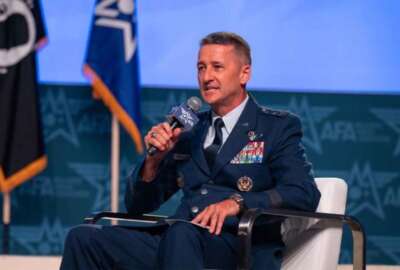David Wray, the chief technologist at Micro Focus Government Solutions, said agencies could find savings quickly by consolidating contracts and/or moving to consumption based buying.
A lot of agencies have been asking and requesting money for IT modernization, but most of the money has been appropriated to mission programs and to critical mission areas so the core foundational things that IT has needed for some time have not been funded. This is really their opportunity to put together a business case to ask for those funds for some of the critical projects they need and generate savings quickly.
David Wray
Chief Technologist, Micro Focus Government Solutions
Cost Savings vs. Cost Avoidance
Agencies have to pick the right projects, and have good governance, risk and compliance in place because if you don’t have that in place you may not get funding in the first place
David Wray
Chief Technologist, Micro Focus Government Solutions
When Congress passed the Modernizing Government Technology (MGT) Act in December as part of the Defense authorization bill, many in the federal IT community focused on the centralized fund. But the other significant part of the law gave agencies the ability to establish working capital funds.
Under this section of the law, each agency can set up working capital funds where they can reprogram or transfer funds for up to three years to modernize or retire legacy systems.
Agencies had until March 26 to decide whether they planned to establish working capital fund under the MGT Act. OMB laid out further requirements for the working capital funds in its February guidance. OMB stated it will oversee the fund and the IT investments it supports. Agencies must report to OMB quarterly about all IT investments funded out of the fund.
David Wray, the chief technologist at Micro Focus Government Solutions, said the working capital funds could fill a key missing piece to the modernization puzzle.
“If you are going to drive cost savings and reprogram that money to your working capital fund, you should start now especially if you have investments that you want to choose and they have a return on investment over the next six-to-eight months, you will not realize those savings until next budget year,” Wray said on the Innovation in Government show. “A lot of agencies have been asking and requesting money for IT modernization, but most of the money has been appropriated to mission programs and to critical mission areas so the core foundational things that IT has needed for some time have not been funded. This is really their opportunity to put together a business case to ask for those funds for some of the critical projects they need and generate savings quickly.”
Wray said too often agencies have a too narrow view of how to find savings that could then be reprogrammed.
For example, he said, agencies could find savings quickly by consolidating contracts and/or moving to consumption based buying.
“If you talk to the CIOs, they want to modernize IT. They want to fix some of the inefficiencies they’ve had for quite some time. They want to put in better governance, risk and compliance tools, better visibility and transparency into IT so they can actually consolidate and reduce costs as well as move to modern architectures,” he said. “This is a wonderful opportunity for those CIOs to actually get funding for some of the things they’ve needed for some time.”
Along with contracts, CIOs can focus on IT asset and software asset management as ways to find savings. If their agency is paying for software licenses they aren’t using or don’t need, or if there are mobile devices that aren’t being used, agencies can begin to bank money in the working capital funds by renegotiating services or license agreements.
“Almost every agency is failing on their FITARA scorecard when it comes to software IT asset management. But it’s something, from speaking directly to CIOs, they’ve struggled to fund. So this is an opportunity for a quick win,” Wray said. “I think the IT Asset Management Institute estimated, at least in the federal space, over $1 billion could be saved. And most agencies have on estimate 20 percent-to-30 percent of over utilization of software across their enterprise, especially with some of the large enterprise software that is out there today. They simply can’t count very well and don’t have enterprise tools for procuring and managing some of the software from these large vendors like Adobe, Microsoft and Oracle.”
He added if agencies focus on one or two vendors, they could generate savings quickly.
Then agencies could move to application rationalization and reduce the number of similar software titles and create one enterprise solution.
Wray said CIOs at large agencies could easily find $100 million or more in real savings from these initial steps.
“Agencies have to pick the right projects, and have good governance, risk and compliance in place because if you don’t have that in place you may not get funding in the first place,” he said.
Copyright
© 2024 Federal News Network. All rights reserved. This website is not intended for users located within the European Economic Area.








